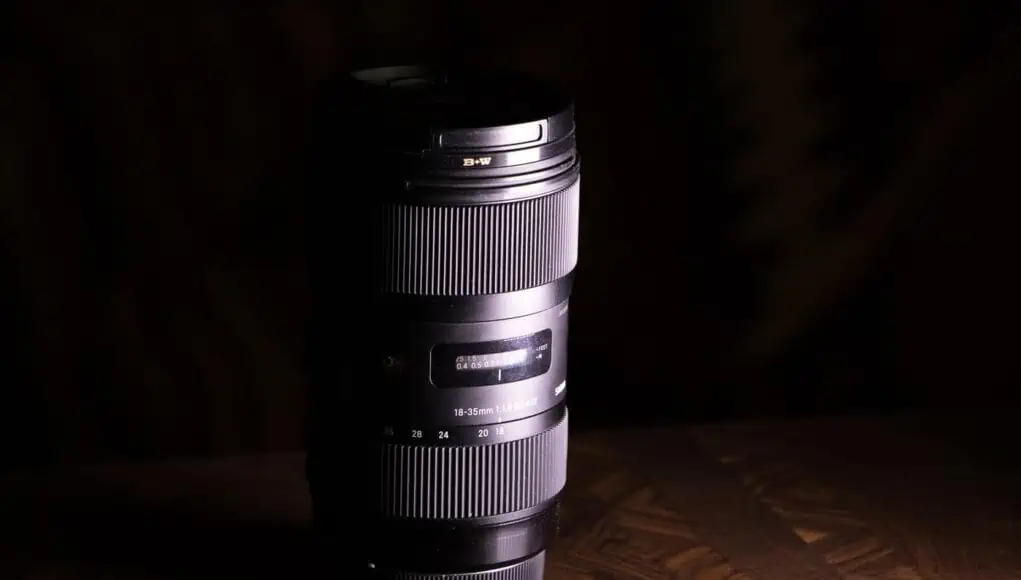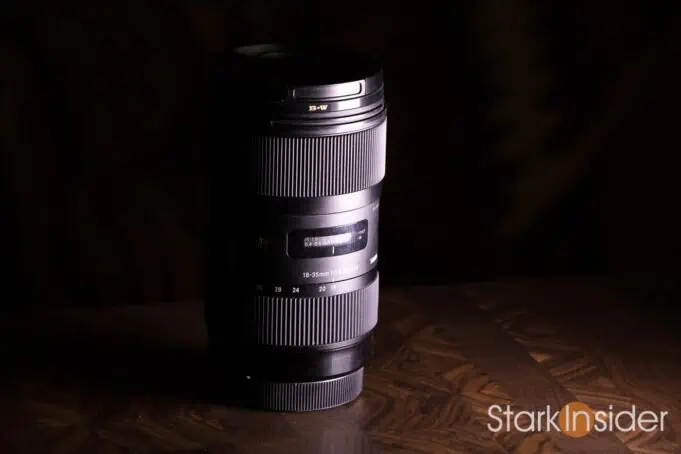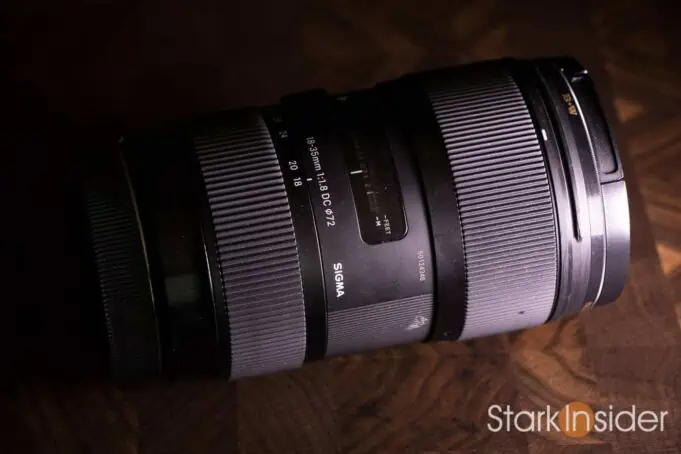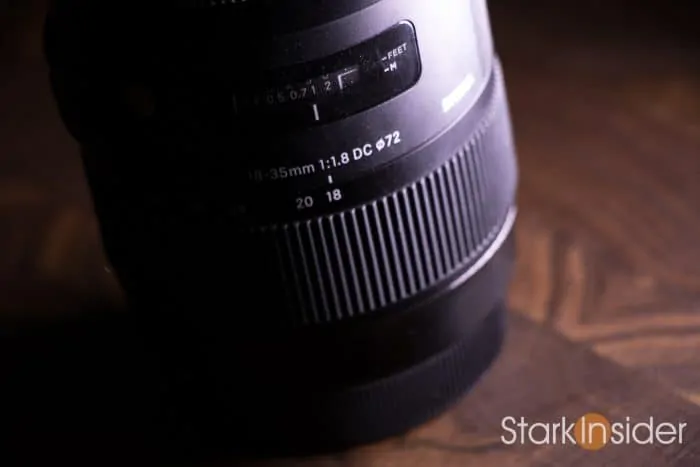Re-visiting a classic lens: the Sigma 18-35mm f/1.8 ART.
Swapping out lenses on your mirrorless or DSRL camera is one of the joys (and challenges) of photography and videography.
But on the downside: weight.
Lugging around a bag of glass can be frustrating, especially for travel, documentary and other shooters on the go. Hence, the value of a zoom lens. Instead of taking valuable time to change a lens you can simply use the zoom ring to move the FOV closer to a subject or further away depending on the goal of the shot.
After shooting videos here on Stark Insider for almost 20 years now there’s one lens I keep coming back to, and that’s the:
Available in a variety of mounts including Canon (EF-S), Nikon (F), Pentax (K), Sony (E), there’s several reasons why I think this is one of the best all-in-one lenses you can buy today.
Image Quality

First and foremost is the image quality. The Sigma 18-35mm is absolutely spectacular. Punching well above its weight, you get sharpness and edge-to-edge consistency, but also there’s an organic nature to the images that doesn’t feel, for a lack of a better word, as “digital” as you might find on some others. I especially notice this in the highlights which are rich and soft, without any noticeable artifacts or clues that you’ve shot this on a digital camera.
Sigma 18-35mm f/1.8 ART
Key Features
- EF-Mount Lens/APS-C Format
- 18-35mm Zoom (28.8-56mm — 35mm Equivalent)
- Aperture: f/1.8 to f/16
- Hyper Sonic Motor AF System
- Rounded 9-Blade Diaphragm
- Compatible with Sigma USB Dock for fine-tuning and firmware updates
- Available Mounts: Canon, Nikon, Pentax, Sigma, Sony
- Price: $699 USD
- Buy/Research: Amazon
Keep in mind we’re talking about a lens that costs about $699 USD at the moment (original retail $799) and the results are rather mind-blowing really.
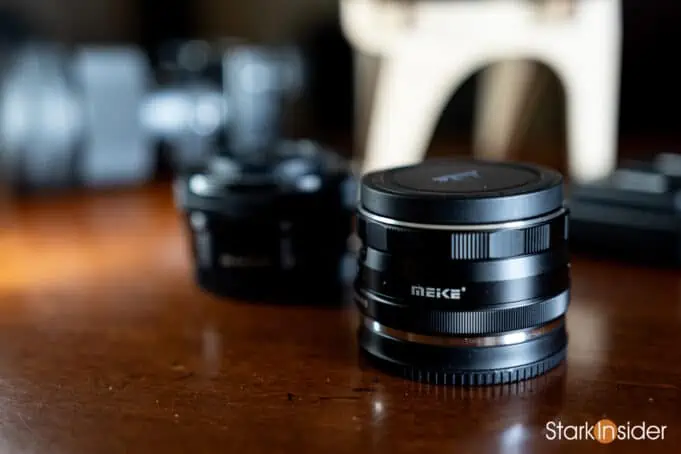
I’ve achieved equally impressive results for photos as well as short films. Images from this Sigma lens are truly something to behold. And I say this as an owner of one since 2013. I keep coming back to it time and time again for a variety of projects and when I drop the footage into Adobe Premiere I’m gob smacked pretty much every time (so long as I didn’t blow my focus!).
Also, I should note that the out-of-focus bokeh is pretty and milky smooth.
Low Light Performance
With an f-stop rating of f/1.8 you would expect good performance in low light conditions. And that is exactly what you get.
Many zooms, especially in this price range, cap out at f/4 which is generally not good enough for non-daylight scenarios. You could always light a scene of course. But in my situations — live events, weddings, documentaries — that may not be possible. With f/1.8 you can stop down and get some great results, which is pretty impressive considering, again, this is a zoom lens and not a prime.
Easy Adaptability to Canon RF for Future Proofing
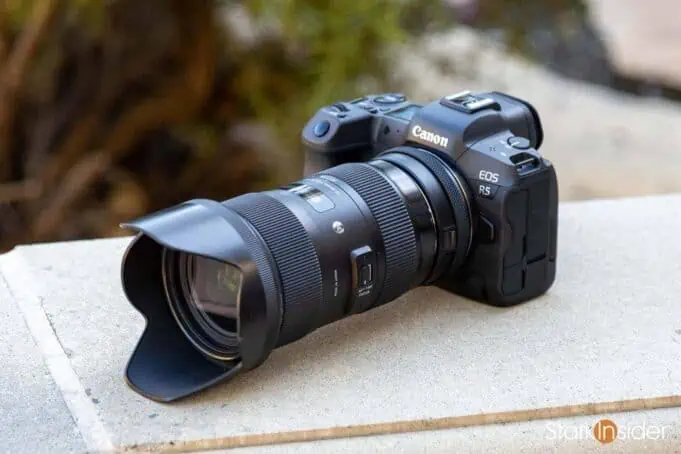
Canon’s new RF lens mount is all the rage these days. Sure enough, the company has done a good job rolling it out with a swath of new mirrorless bodies (Canon EOS R, R5, R6, C70, etc.). Suitable for both photography and videography, there’s a growing library of RF glass. Note, though, the stuff from Canon is… pricey! A little too rich for my taste.
I prefer to own rather than rent so the Sigma is a good choice as well. Fortunately, the native EF-S lens mount is easily adaptable to the new RF standard. Results are excellent too. I use this Canon EF-S/EF to RF adapter on my Canon EOS R5 for photography with no issues whatsoever. Keep in mind the Sigma 18-35mm ART is a crop lens suitable for an APS-C sensor, meaning it won’t cover full-frame (hence, the lower cost). But you can switch the R5 to crop mode and you will be fine — but lose some pixels/resolution in the process.
The Sigma 18-35mm ART is Built Like a Tank
I’ve travelled the world with this Sigma. From Paris to Canada to Iceland and to, one of my favorite locations, the Baja. Dropped it more than once. Used it in the rain, snow and wind storms, and hot desert conditions around Loreto, Baja California Sur.
One time I even had to store the lens in a freezer so I could harden a stubborn ND filter ring that refused to come off. A few hours and some rough and tumble wrench work later and it popped off.
And the Sigma 18-35mm kept on truckin’.
Focus and Zoom Rings are Butter Smooth
I really appreciate a piece of gear, be it for cameras or some other bit of tech, that is pleasing to use. Such is the case here as well. In particular I find the focus and zoom rings smooth.
There’s no stuttering or unexpected resistance when being turned. Action is reassuring. This is especially helpful when hitting focus points, or zooming during a live shot without causing any jarring impact to the viewer.
True, this isn’t a true cinema lens, so if you want to use some sort of follow-focus system you’ll need some additional gears. In that case this particular Sigma might not be the best choice. Still, if you’re mostly run-and-gun or a solo operator this could be a good option given the price and flexibility.
Camera News, Reviews, Trends
On Stark Insider
But: No Image Stabilization
One caveat is the lack of image stabilization (IS). You won’t find it here. I think that’s price you pay for the stellar image quality.
Given that a lot of mirrorless cameras today have amazing in-body stabilization (Panasonic GH5 and GH6, for example) that can be mitigated somewhat, and the results are perfectly acceptable based on my testing.
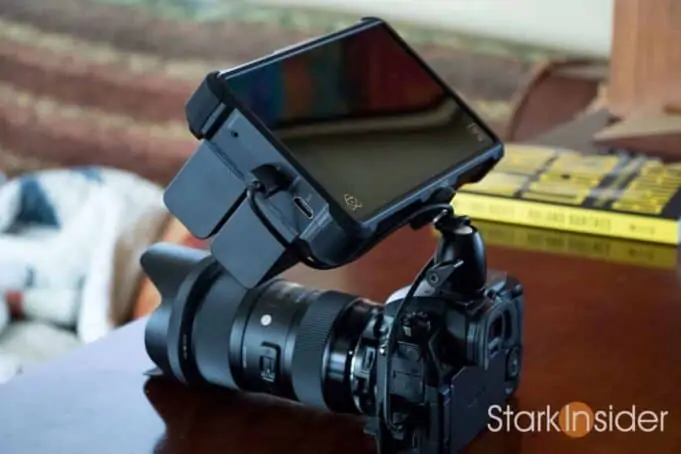
Vloggers, YouTubers and content creators who are walking around and generally on the go will want to opt for something different.
On the other hand, if you’re shooting a short film, music video or a wedding and have the time to properly plan and execute your shots then I think the lack of IS won’t be a problem. Gimbals, drones, sliders and all manner of video stabilizers will also help in addition to the camera’s own internal IS system. At the end of the day you’ll need to decide what’s best for your project.
Sigma 18-35mm f/1.8 ART: Highly Recommended
Needless to say the Sigma 18-35mm f/1.8 ART is one of our favorite lenses here on Stark Insider.
Whether it’s a short film, documentary or product photography or capturing high-res archival images of oil paintings it’s simply a workhorse that can’t be denied.
Best of all, the price won’t cause an accounting meltdown. Last I checked, this outstanding Sigma classic is selling for about $699. Which I find incredible, as the retail for this lens was about $800 when it first came out about 11 years ago or so.
Oh, one final point worth mentioning. If you do buy this lens don’t forget there’s also a USB dock available. With that connected to your Mac or PC you can update the firmware. Obviously that’s something you won’t do often, but it’s handy to get all the latest fixes and updates applied when you first unbox it.
At the end of the day this Sigma 18-35mm perhaps proves that you can have your cake and eat it too. Consider it three mighty primes in one: 18mm, 25mm and 35mm. All at f/1.8 with unparalleled image quality for the price. Pretty sweet stuff indeed.
RESEARCH/BUY

